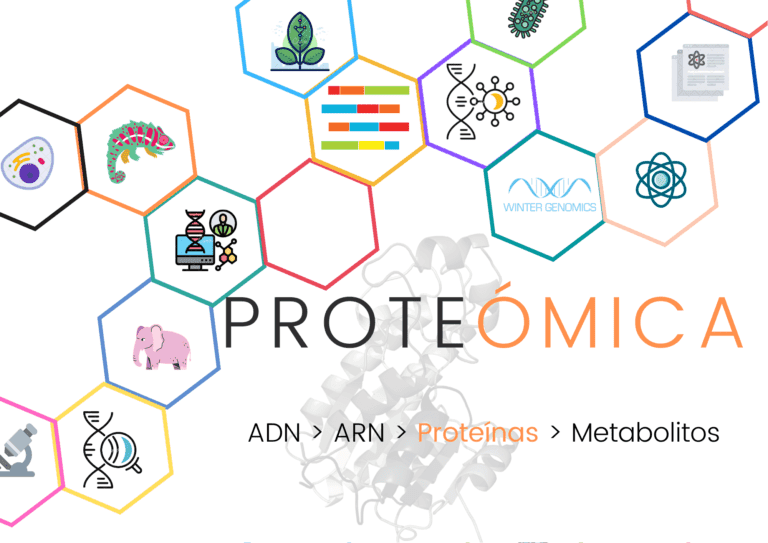Proteomics is one of the most prominent fields in the health sciences since recent times. It is essentially the study of proteins present in certain conditions and stimuli. Proteomics is a vast field that belongs to an even greater field of study known as omic science, in which genomics, metabolomics, lipidomics and others can be found. All of these are considered as emerging areas of study, as it is with the current technology and advancements that have reached most of significant progress. That said, how do you see the future of proteomics?
Currently, proteomics have many applications in different fields such as medicine, oncology, microbiology, agriculture, among others. (Al-Amrani, 2021) And given that proteins represent about 75% of the dry body weight of a human being, this makes a lot of sense. Understanding the structure and functionality of proteins seems to have a great potential in many of the mentioned fields. In fact, thanks to proteomics, by fully understanding the structure of a protein, one can predict its function in a semiacerated way. The problem is that human DNA has about 20,000 genes involved in the protein production process, and it is estimated that each gene can be responsible for the production of about 10 different proteins, which takes the total number of approximately proteins, only in humans, about 200,000 to 300,000, which means that we do not even identify all proteins and their functions.
5 to 10 years in the future
So, what will the proteomic be like in five years? It is likely that they identify and classify more proteins, but currently proteomic has several obstacles to overcome, something that could be addressed in the next decade. Some of the main obstacles that limit the potential of the field are the current research tools, which are inefficient to address the complexity both in analysis and data collection. In an interview by Michelle Taylor to Asim Siddiqui, Vice President of Research and Technological Development in Seer in 2022, he said: "The processing of samples in a way that allows a deep and impartial analysis of the proteome is incredibly laborious and takes a long time." Along with this, the scale has always been an important problem, as avoiding compromising the samples is essential, but returning to the large scale of the proteomic, it is sometimes quite complex to perform large-scale analyses.
However, it seems that every day new and new techniques come up specifically designed to address these problems, so the proteomic could make a gigantic leap in the next 5 to 10 years with the development of new analytical tools such as mass spectrometry, or more efficient gel techniques such as SDS-PAGE and Western Blot. On the other hand, the Human Proteoma Project was launched in 2010 by the Organization of Human Proteoma, with the main objective of discovering and categorizing new proteins and an additional objective of developing techniques to quantify, identify and more efficiently explore human proteoma. (Corrales F. 2013). Therefore, if this project looks like something to the Human Genome Project in the next 10 years, there is a real possibility of having been identified more than 50% of the complete proteoma.
20 years in the future
But what will happen in 20 years in the future? In the interview with Asim Siddiqui, he asked: "How do you imagine overcoming these large-scale obstacles across the field of proteomics?" Its answer essentially concerns the fact that there are three main ways to improve proteomics: to group similar molecules, which allows easier and faster analysis when using similar processes to identify new molecules that are similar to those known. As mentioned before, a gene may be responsible for multiple proteins that are different, but not so different. Another approach is based on a much more complex approach, and is the development of technologies designed to identify a single molecule at the same time, which means analyzing a single molecule at every moment, today this seems difficult, in 20 years, could be something common. Finally, the third approach is through indirect protein measurement, using antibodies to label certain parts of proteins.
This last approach has some problems, the first is that there is no complete measurement of the protein itself, but of its route and quantity. The other, and the main problem, is that it is not possible to accurately label unknown proteins, i.e. currently. Antibodies are one of the most useful tools that have gained a lot of reputation, so what happens if we could find a way to combine the first and third approach through the specific antibody engineering that recognize common structures, but deliberately avoid known proteins? This is something that could be widely used in 20 years.
30 to 40 years in the future
Besides, what will the proteomic be like in 30 or 40 years? Based on the previous statements, at this time there is a very high probability that the proteoma has been fully identified, the proteomic has finally achieved complete disclosure. Perhaps not in a functional way, as the Human Genome Project ended in 2003, but then it ended again and better in 2022, but surely all proteins of the human proteoma will be known. Recombinant proteins would now be a fairly common product, even recombinant human proteins and genetic engineering to modify, improve or replace the most studied proteins, such as insulin, would not be revolutionary but rather normal.
In 40 years, most, if not all, protein-based diagnostic instruments would be very refined and accurate. Diagnostic medicine would be very advanced and, through the use of extremely specific antibodies capable of recognizing a variety of proteins, since now all proteins are known, some of the most complex pathologies would become easily identifiable and with specific treatments involving the use of very specific monoclonal antibodies.
Basically, there would be a cure for each problem or even a single cure for multiple problems, as specific medicine and diagnosis would greatly benefit from advances in proteomics. Proteins are involved in virtually all biological processes. At this point, knowing each protein and having an exorbitant knowledge of the "old" proteins, we could essentially control most processes, improving existing ones and repairing the damaged ones. Diseases such as Parkinson, Huntington's disease, the spinal muscle atrophy, would all be easily maintainable, as they all have a genetic component, and perhaps there is no definitive way to heal them as they are, but a genetic component means a problem in protein production, but with such complete control over the proteoma, supplementing any protein and using the administration directed to deliver these essential proteins should be quite simple.
50 years in the future
Finally, in 2073, 50 years in the future, advances are still difficult to imagine at this time. Medical attention should be at its highest point, the proteoma, with all proteins, is completely mapped in terms of function, origin, metabolism, structure, and most, if not all, proteins have been perfectly described. Medical procedures are now so specific and sensitive that our own bodies are pharmacies, and only a minimum stimulus is required for the body to produce its own proteins, antibodies or any other necessary component. We have achieved complete control over our biological function and have actually taken over the process of evolution through a complete understanding of proteins.
Proteomics is one of the most fascinating and constantly growing fields in the health sciences. The current advances and uses, along with how much they have helped in diagnostics and treatments, are just a look at the potential yet without exploiting it has.



Comments